Transforming your bedroom into a personalized sanctuary has never been easier or more affordable than with DIY headboard projects. Whether you’re aiming to refresh your space on a budget or simply want to add a unique touch, crafting your own headboard offers countless possibilities. From sleek wooden designs to whimsical cardboard creations, there’s a style to suit every taste and skill level. Not only do DIY headboard projects save money, but they also allow you to customize your space to match your personality, blending functionality with aesthetic appeal. Explore a variety of materials like wood, cardboard, and foam, each offering distinct benefits and creative potential. Discover how simple DIY headboard projects can elevate your bedroom decor while providing a durable and stylish focal point. With so many ideas at your fingertips, why settle for ordinary when you can create something extraordinary?
Key Takeaways
– DIY Headboard Ideas: Transform your bedroom with customizable headboard projects using wood, metal, fabric, or leather.
– Batting Choices: Opt for firm foam for support, thin polyester for durability, or alternative materials like wool or cotton for softness.
– Material Options: Select from wood for a classic look, metal for modern aesthetics, fabric for softness, or vinyl for personalized designs.
– Alternatives to Headboards: Consider wall-mounted beds, platform beds, or floating beds for a stylish and space-saving solution.
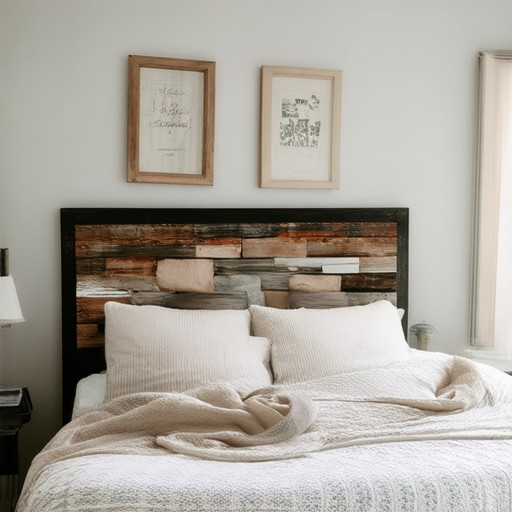
What Can Be Used as a Headboard?
A headboard is a crucial component of a bed, serving both functional and aesthetic purposes. Here are several options that can be used as a headboard:
- Wooden Headboards: Wood is a popular choice due to its durability and versatility. Options include oak, maple, and pine, each offering distinct aesthetics.
- Metal Headboards: Metal, such as stainless steel or iron, provides a modern or industrial look and can be sleek or ornate depending on the design.
- Vinyl or Leather Headboards: These materials offer a softer touch and can be padded for added comfort, making them ideal for a cozy bedroom setting.
- Fabric Headboards: Fabrics like cotton, silk, or velvet can add luxury and texture to the bed, often paired with memory foam for enhanced comfort.
- Wall-Mounted Headboards: These space-saving options come in various styles and materials, ranging from minimalist designs to more elaborate ones, often complementing the bed frame or standing alone.
- Platform Bed Headboards: Many platform beds feature integrated headboards, available in wood or metal, offering a stylish and supportive solution.
- Custom Headboards: Personalized options like those printed with photos or artwork allow for a unique and artistic touch to the bedroom decor.
- Simplicity and Functionality: Sometimes, a sturdy bench or even a decorative pillow can serve as a simple yet effective headboard solution.
How to Create a Cheap Headboard
Creating a custom headboard doesn’t have to be expensive. Here are several affordable and creative ways to build a headboard that suits your style and budget:
- Pegboard Headboard: Pegboard is an inexpensive option that you can paint or decorate with flags. Cut it to the size of your mattress and attach it securely to your bed frame using L-shaped brackets.
- Cardboard Headboard: For a quick and budget-friendly solution, use thick cardboard. Measure your mattress, cut the cardboard to size, and wrap it with soft foam or batting for extra comfort. Secure it to your bed frame with Velcro strips or brackets.
- Repurpose an Old Door: Transform an old door into a stylish headboard by sanding it down and painting it to match your room decor. Attach it to your bed frame and customize it with decorative handles or knobs.
- MDF Board Headboard: MDF boards are lightweight and affordable. Layer multiple MDF sheets to achieve the desired thickness, sand them smooth, and paint or stain them to match your room’s aesthetic. Secure them to your bed frame using wood screws.
- Wooden Plank Headboard: Use leftover wooden planks to create a rustic headboard. Sand the planks, stain or paint them, and attach them together with wood glue. Reinforce the edges with wood screws for stability and add decorative trim for extra detail.
- Fabric-Wrapped Headboard: Add texture and color by wrapping fabric or wallpaper around a cardboard or MDF core. Glue the fabric to the core and staple it in place, or use wallpaper paste and hang fabric over a prepared surface.
- Fabric-Covered Headboard: Create a modern look by framing a large piece of fabric. Cut the fabric to size, wrap it around a backing material like cardboard or MDF, and attach it to your bed frame using brackets or strips.
- Book Headboard: Stack books to create a unique and visually appealing headboard. Secure the books together with bookends or adhesive, ensuring they are stable and tall enough for your bed.
- Canvas Headboard: For a personalized touch, use a large canvas wrapped around a frame. Measure your mattress, frame the canvas, and attach it to your bed frame. Customize it with paintings, quotes, or patterns.
Each method offers a unique style and level of comfort, allowing you to create a headboard that reflects your personality and budget preferences. Whether you prefer a simple, minimalist look or a more elaborate design, there’s a solution to suit your needs.
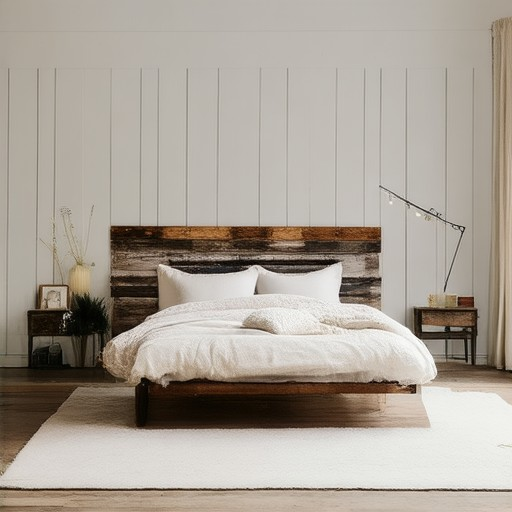
What is a Floating Headboard?
A floating headboard, also known as a wall-mounted headboard, is a stylish and functional addition to your bedroom decor. Unlike traditional headboards that attach to the bed frame, a floating headboard is securely mounted on the wall, freeing up valuable floor space while offering a unique aesthetic appeal.
Benefits of a Floating Headboard:
- Space-Saving : Perfect for small bedrooms or spaces where floor space is limited.
- Versatile Design : Available in various styles, including modern, traditional, and industrial designs.
- Adjustable Height : Many models feature adjustable arms to accommodate different bed heights.
- Durable Construction : Made from sturdy materials like wood, metal, or fabric-covered options.
- Aesthetic Appeal : Adds a contemporary touch to your room, complementing both minimalist and bohemian decors.
Installation Considerations:
- Mounting : Typically requires drilling into walls and securing with brackets or bolts.
- Weight Limits : Ensure the headboard is rated for your mattress weight to maintain safety.
- Safety Features : Use locking mechanisms or straps to prevent movement.
Design Options:
- Choose from various finishes, including painted wood, metal frames, or fabric-covered panels.
- Some models offer adjustable arms for added comfort and personalization.
Aesthetic Enhancements:
- A floating headboard adds visual interest to your room, making it a focal point while maximizing space efficiency.
Alternatives:
If a floating headboard doesn’t suit your needs, traditional headboards remain a great option for comfort and functionality.
Care Tips:
- Clean regularly to maintain hygiene and extend the lifespan of your headboard.
- Check for loose hardware and tighten as needed to ensure stability.
By choosing a floating headboard, you can enhance your sleeping area with style and practicality, making it a worthwhile investment for any homeowner.
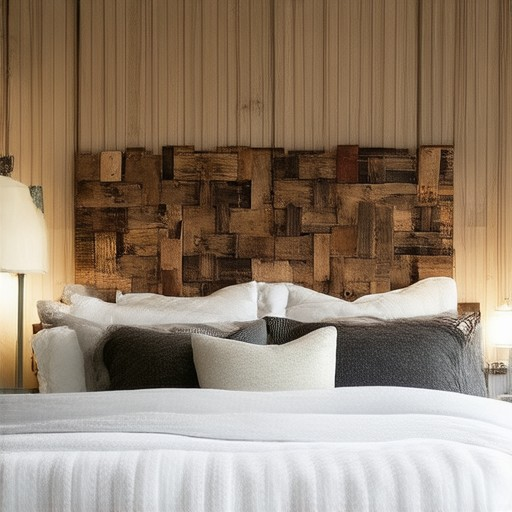
Choosing the Right Batting for Your Headboard
When selecting batting for your headboard, it’s essential to consider factors like comfort, durability, and ease of installation. Here’s a breakdown of the best options:
- Firm Foam Batting: Known for its excellent cushioning properties, firm foam provides consistent support and helps distribute weight evenly. It works well for headboards that require a firmer surface.
- Thin Polyester Batting: Combining firm foam with a thin layer of polyester adds durability and prevents the batting from flattening over time. This option is ideal for headboards that need a balance of softness and support.
- Alternative Options: While natural fibers like wool or cotton offer breathability, they can be costly and may not be as readily available. Synthetic options like polyfill are more affordable and easier to source, making them a practical choice for DIY projects.
- Thickness Consideration: Opt for a medium-firm batting to strike a balance between support and comfort. Too thick can make the headboard feel too stiff, while too thin may compromise durability.
- Texture and Density: Look for batting with a dense texture that molds well around edges to prevent lumps and ensure a smooth finish.
- Installation Ease: Ensure the batting is easy to staple or glue onto the headboard frame, especially if you’re completing the project yourself.
- Durability: High-quality materials like firm foam combined with thin polyester layers tend to last longer, resisting wear and tear compared to all-polyester options.
- Cost Considerations: Mid-range options offer a good balance between comfort and budget, while premium materials provide added luxury at a higher cost.
- Personal Preference: Test the batting to determine what feels best for you. Some may prefer a plush feel, while others may find a firmer surface more comfortable.
For most headboards, a combination of firm foam and thin polyester batting is an excellent choice, offering both comfort and durability. This selection ensures your headboard provides years of support while maintaining its shape and appearance.
Materials for Making a Headboard
When selecting materials for your headboard, consider factors like durability, aesthetics, and ease of maintenance. Here are some popular options:
- Wood : Choose from pine, oak, or maple for a classic look. These woods are readily available and can be painted or stained to match your decor.
- Metal : Metal frames offer a modern or industrial aesthetic. Options like black metal are both stylish and durable.
- Fabric : Fabric-covered headboards can add softness and style. Consider cotton for breathability or velvet for a luxurious feel.
- Leather : Real or faux leather provides an elegant finish. It’s relatively easy to clean and can be customized with dye or paint.
- Cardboard/MDF : Lightweight and easy to customize, these materials are great for DIY projects. Paint them to match your room’s theme.
- Suede : Known for its soft texture, suede adds a touch of sophistication. It’s also low-maintenance and easy to clean.
- Vinyl : Waterproof and printable, vinyl is ideal for personalized designs. However, comfort may vary depending on usage.
When assembling, ensure the panels are securely attached to the frame using screws or glue for stability. Consider adding decorative elements like carvings or mirrors for extra flair, but plan carefully to maintain functionality. Measure your bed for proper fit and consider cleaning and maintenance needs based on your material choice.
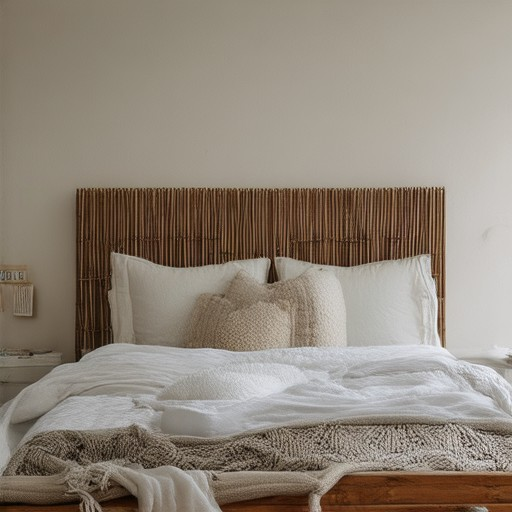
What to Have Instead of a Headboard
If you’re looking for alternatives to a traditional headboard, there are several stylish and functional options that can enhance your bedroom decor:
- Wall-Mounted Beds: These beds are designed to attach directly to the wall, eliminating the need for a headboard. They are ideal for saving space and can be customized with various styles and finishes.
- Platform Beds: A platform bed offers a sleek and minimalist look, often featuring slatted designs that add visual interest. Many platform beds come with built-in storage options.
- Floating Beds: Floating beds are suspended from the ceiling, giving a luxurious and spacious feel. They are perfect for rooms with high ceilings and can be decorated with drapes or bedding to create a cocoon-like ambiance.
- Trundle Beds: Trundle beds are practical solutions for extra sleepers, offering pull-out functionality and often incorporating storage compartments underneath.
- Bunk Beds: Bunk beds are a great space-saving solution, especially for children or guests. They can be styled with colorful mattresses or added lighting for a fun vibe.
- Canopy Beds: Canopy beds add a touch of elegance to any room. They can be positioned against a wall or freestanding, creating a cozy retreat without the need for a headboard.
- Bench or Ottomanson: Using a sturdy bench or ottomanson as a bed frame is a versatile alternative. It works well in small spaces and can serve as additional seating during the day.
Each of these options offers unique benefits, allowing you to customize your sleeping area to suit your personal style and space requirements.

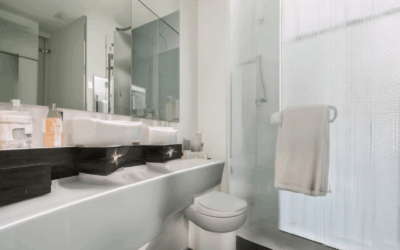
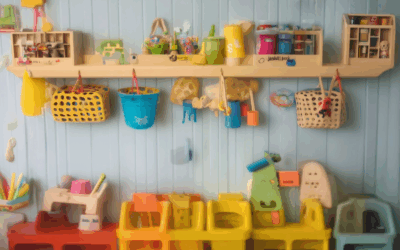
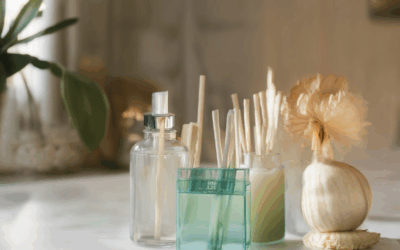
0 Comments